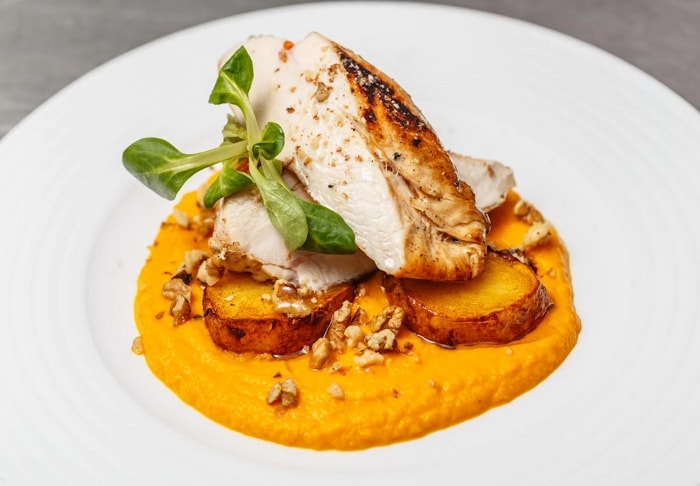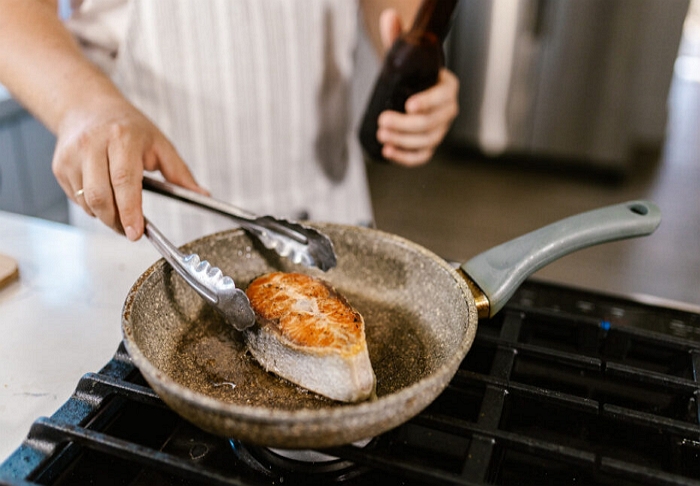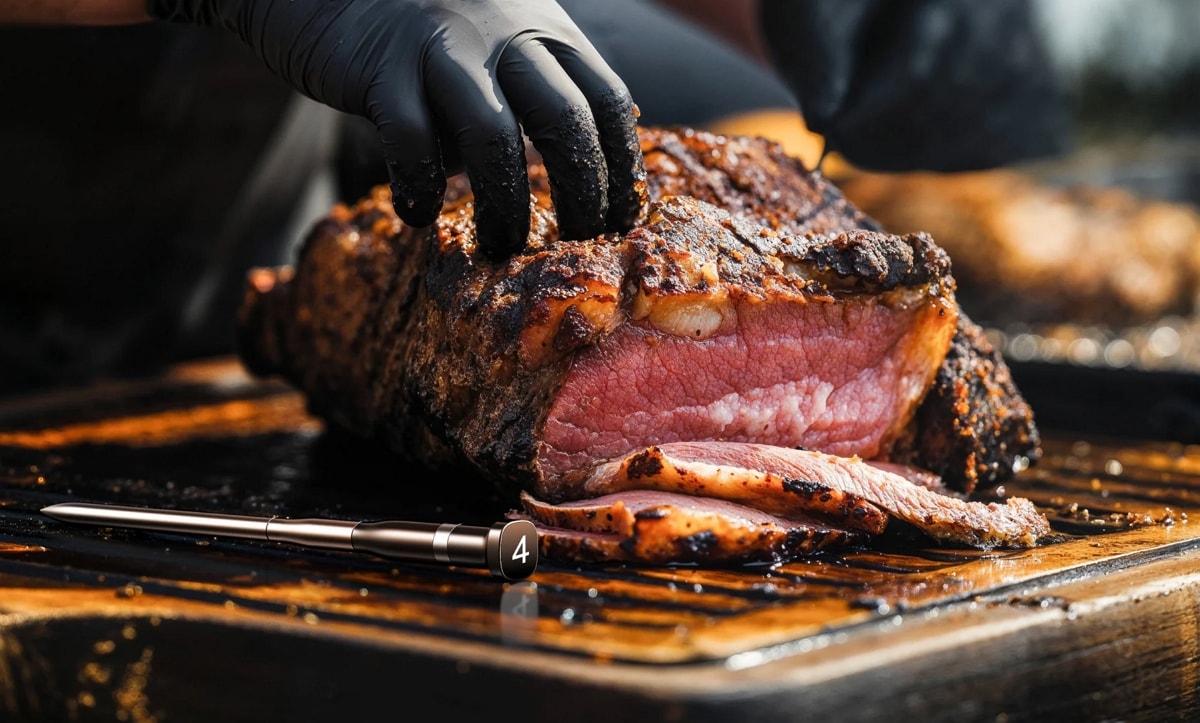With its succulent texture and delicate flavor, shrimp emerges as the crown jewel of barbecues and gatherings. However, shrimp are delicate and cook quickly, so it’s very easy for them to become tough or overcooked.
The thin line between achieving shrimp that’s succulent and tender versus rendering it tough and rubbery hinges on a single crucial factor: temperature. The difference between a shrimp that melts in your mouth and one that leaves you chewing with disappointment can be a matter of mere seconds.
So we will show you the correct temperature to grill shrimp and the best way to measure shrimp’s internal temperature.
At What Temperature to Grill Shrimp?
While the FDA guidelines prescribe a minimal internal temperature of 145°F for most types of seafood, shrimp stands as a unique case due to their susceptibility to overcooking.
Our recommended temperature for grilling shrimp is set at 120 ℉ (49 ℃) for optimal juiciness. This temperature differential underscores the delicate nature of shrimp, requiring a delicate touch to achieve that perfect balance between succulence and safety.
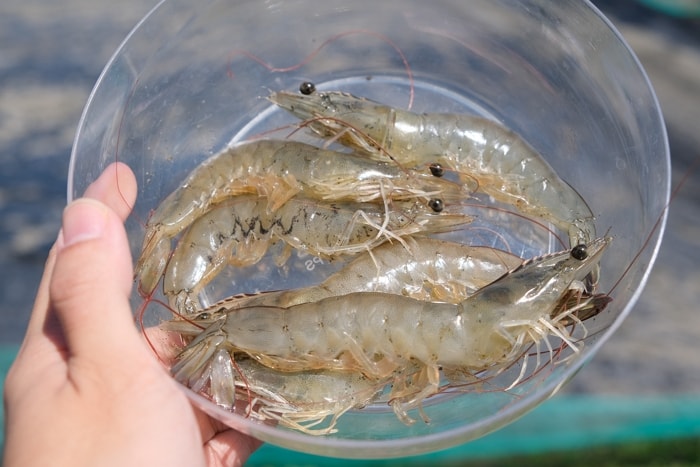
However, it’s worth noting that this specific recommendation caters to the grilling of larger shrimp. It’s essential to adhere to this when opting for grilling, given that smaller counterparts tend to undergo rapid cooking. Furthermore, handling smaller shrimp on the grill demands heightened precision, as even an additional 30 seconds can result in an undesirable outcome – a transformation from tender to tough, rubbery textures.
You May Also Like: Internal Temperature Guide for Seafood.
Measure the Temp of Cooked Shrimp with Your Grill Thermometer
Shrimp that have that snap to them and are juicy and tender can be a challenge to perfect without thermal thinking and a touch of science; however, with the right grilling expertise and a trusty meat thermometer at hand, grilled shrimp can transform into a delectably juicy meal.
To ensure your shrimp is perfectly cooked, don’t rely solely on its bright pink exterior. Instead, utilize your instant read meat thermometer to check the internal temperature. When it registers 120°F (49°C), you can take the shrimp off the grill.
InstaProbe instant read thermometer has a reading speed of just 0.5 seconds, which can help you quickly gauge the internal temperature of grilled shrimp, preventing overcooking. Moreover, its accuracy is up to ±0.5°F (±0.3°C).
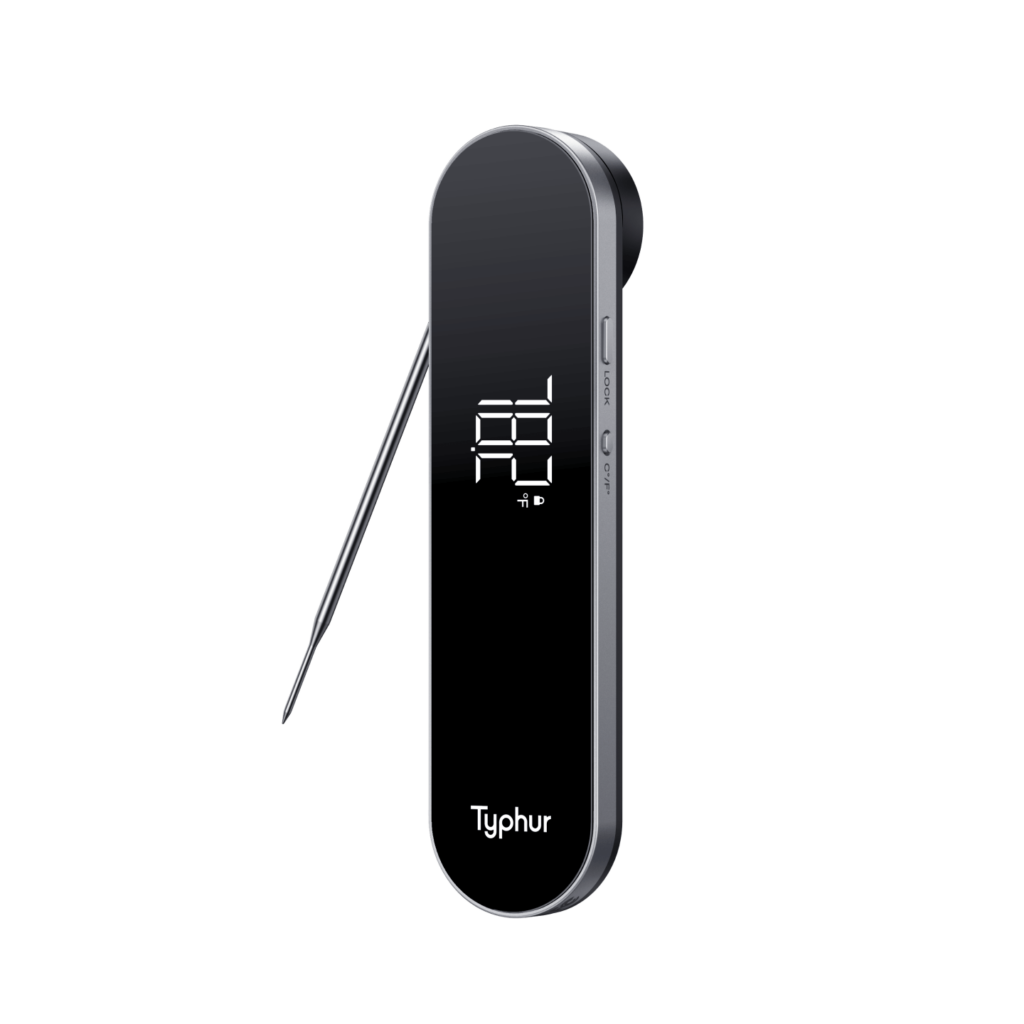
Instant Read Meat Thermometer
How Long Should You Cook Shrimp on a Grill?
The cooking time largely depends on the size of the shrimp.
- Small Shrimp: These will typically need about 2 minutes per side.
- Medium Shrimp: 2-3 minutes per side is ideal.
- Large or Jumbo Shrimp: Aim for 3-5 minutes per side.
The best way to achieve the right grilling result with shrimp is to use high heat for the right amount of time. High heat ensures a quick sear on the shrimp, sealing in their natural juices and flavors. It gives the exterior a delicious char while preserving the moist and tender interior.
Chef’s Tips for Grilling Shrimp
Skewer them right: Using skewers prevents the shrimp from falling through the grill grates. Bamboo or metal skewers are both excellent choices, though if opting for bamboo, immerse them in water for about 30 minutes to avert scorching.
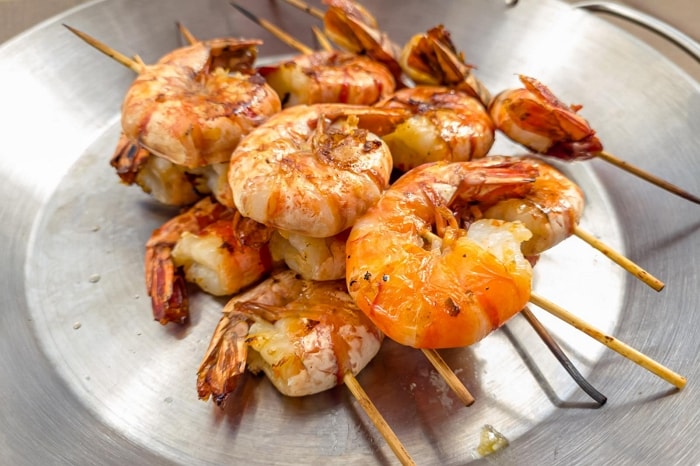
Oil the grill: Precluding the shrimp from adhering to the grill is essential. A light brushing of oil on the grates can prevent sticking and allow for an easier flip.
Drier shrimp grill better: Moisture on the surface of the shrimp can impede the Maillard reaction, which is responsible for that delicious seared crust on grilled foods. A drier shrimp surface can achieve a quicker and more pronounced sear. Grilling drier shrimp tends to give them a firmer and more succulent texture as opposed to a softer, more rubbery one that can result from excess moisture.
FAQs about Grilled Shrimp
1. Check the color, undercooked shrimp retain a translucence. In contrast, properly grilled shrimp will exhibit an opaque white core complemented by pink and reddish accents.
2. Check the shrimp’s internal temp using a grill thermometer. If their internal temperature is lower than 120℉ is undercooked.
Beyond a well-oiled grill, consider lightly oiling the shrimp prior to grilling. This, combined with an adequately preheated grill, drastically reduces the likelihood of sticking.
The versatility of grilled shrimp is its strength. Position it elegantly atop a fresh salad, pair it with a risotto, or simply accentuate with a lemon wedge and fresh herbs. For those with a penchant for sauces, consider a garlic aioli or a tangy tamarind dip.
More Shrimp Recipes
If you love shrimp, here are some more delicious shrimp recipes to try, each with unique flavors and cooking methods:
Bacon-Wrapped Shrimp Jalapeño Poppers
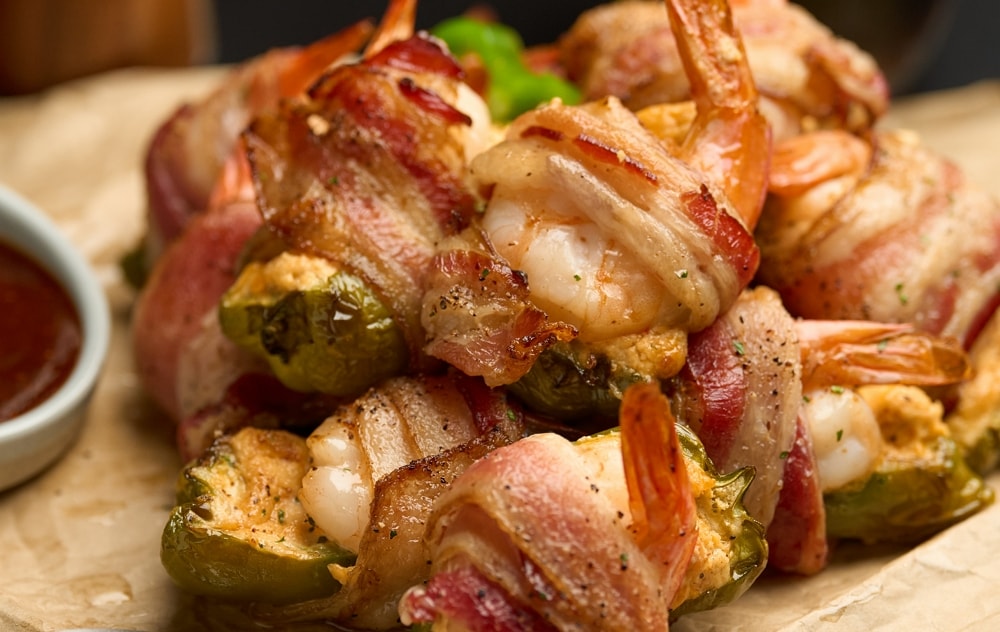
Spicy, savory, and smoky—these bacon-wrapped shrimp jalapeño poppers are the perfect bite-sized appetizer for any occasion. The smoky bacon and spicy jalapeño complement the shrimp perfectly!
Air Fryer Shrimp
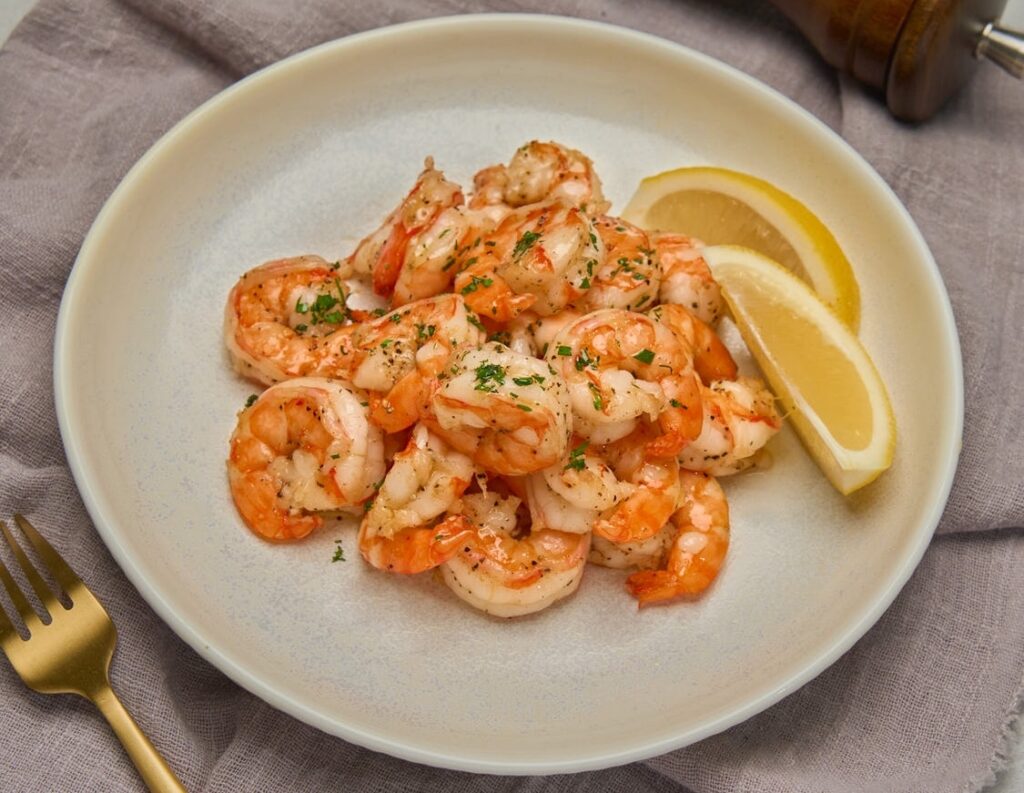
Quick and easy, Air Fryer Shrimp is crispy on the outside and juicy on the inside. Perfect for a low-fat, flavorful shrimp dish with minimal effort and time.
Baja Shrimp Tacos
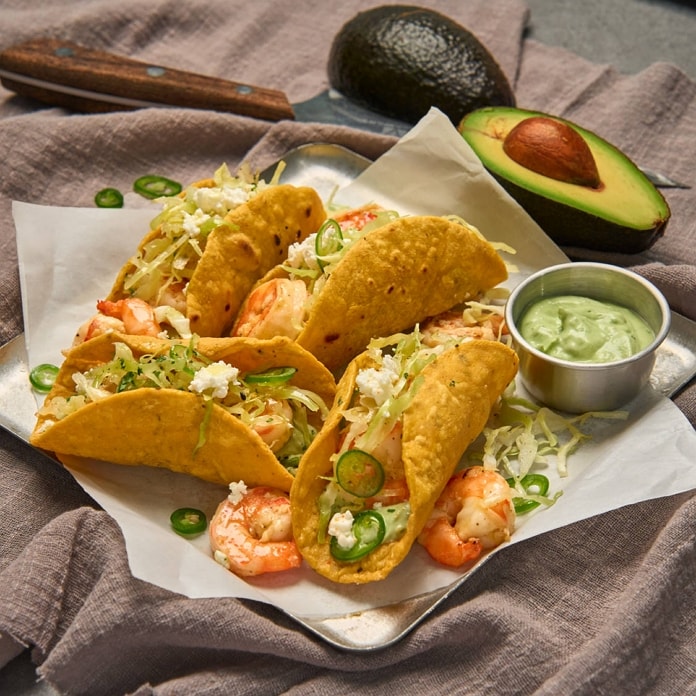
Fresh, vibrant, and full of flavor! Baja Shrimp Tacos are a great way to enjoy shrimp with a tangy slaw and zesty sauce wrapped in a soft tortilla.
Sous Vide Lemon Garlic Shrimp

For ultra-tender shrimp, Sous Vide Lemon Garlic Shrimp is the way to go. The sous vide method locks in all the flavors and juiciness, while the lemon and garlic provide a refreshing twist.
Air Fryer Spiced Shrimp

This air fryer spiced shrimp recipe is a quick and flavorful way to enjoy shrimp with bold seasonings. The air fryer cooks the shrimp to perfection, with a crispy exterior and juicy interior, all without the added oil of frying.


